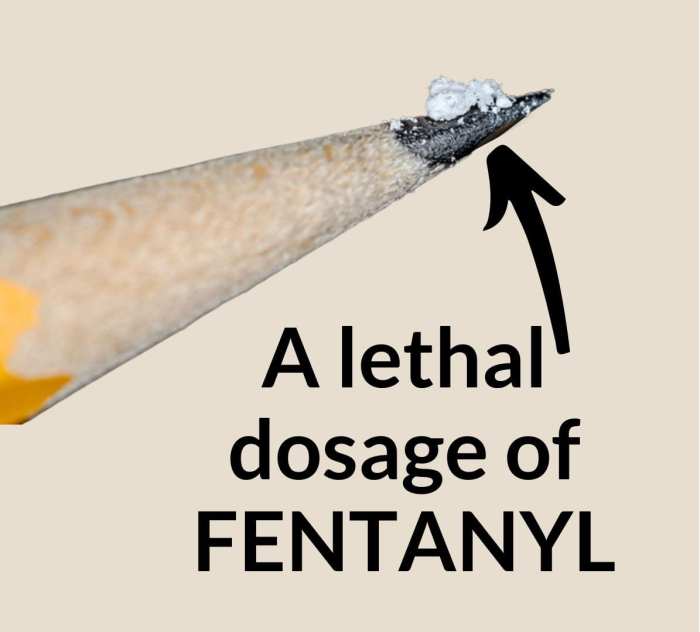
Fentanyl addiction has emerged as a pressing issue in today’s society, capturing attention due to its severe implications on health and safety. This potent synthetic opioid, significantly more powerful than morphine, has contributed to a rise in overdose deaths across communities. Understanding the mechanics of this addiction, the signs to watch for, and the associated risks is crucial for addressing this urgent problem.
As we delve into this topic, we’ll explore not only the nature of fentanyl addiction and its impacts on individuals but also the various healthcare approaches available for treatment and recovery. From medical interventions to alternative support systems, recognizing the multifaceted nature of recovery can empower those affected.
Understanding Fentanyl Addiction
Fentanyl addiction is a complex and serious condition that impacts individuals, families, and communities. Understanding the mechanisms behind addiction, recognizing its signs and symptoms, and being aware of the associated risks can be key in addressing this growing public health issue.Fentanyl is a synthetic opioid that is significantly more potent than morphine. It acts on the brain’s opioid receptors, which are responsible for pain control and feelings of euphoria.
When fentanyl binds to these receptors, it triggers a release of dopamine, creating intense feelings of pleasure. Over time, the brain adapts to the presence of fentanyl, leading to physical dependence. This dependence means that the brain needs fentanyl to function normally, resulting in a strong urge to continue using the drug, even in the face of negative consequences.
Signs and Symptoms of Fentanyl Addiction
Recognizing the signs and symptoms of fentanyl addiction is crucial for early intervention. Various indicators can manifest in both physical and behavioral changes. Common physical signs include:
- Extreme drowsiness or lethargy
- Constricted pupils
- Repeatedly needing higher doses to achieve the same effect
- Withdrawal symptoms when not using fentanyl, such as nausea, sweating, and anxiety
Behavioral changes may include:
- Neglecting responsibilities at work or home
- Withdrawing from social activities or relationships
- Engaging in secretive or deceptive behavior to obtain fentanyl
- Experiencing financial difficulties due to spending on the drug
Risks Associated with Fentanyl Use and Addiction
The risks linked to fentanyl use and addiction are profound and potentially life-threatening. This potent opioid can lead to a range of health complications and societal issues.One significant risk is the threat of overdose. Because fentanyl is so potent, even a small miscalculation in dosage can result in respiratory failure and death. The National Institute on Drug Abuse reports that synthetic opioids, primarily fentanyl, were involved in nearly 70% of all opioid overdose deaths in 2019.Another risk includes:
- Increased tolerance, leading individuals to consume higher amounts to achieve the same effects
- Co-occurring mental health disorders, such as anxiety or depression
- Legal consequences, including criminal charges related to possession or trafficking
- Social implications, such as fractured relationships and job loss
“Fentanyl’s impact extends beyond individual health, contributing to a larger public health crisis that demands urgent attention and action.”
Understanding the dangers associated with fentanyl addiction allows individuals and communities to take proactive measures toward prevention and recovery.
Healthcare Approaches to Fentanyl Addiction

Fentanyl addiction presents complex challenges that require comprehensive healthcare approaches for effective treatment. Understanding the medical treatment options available is crucial for individuals seeking recovery, as well as for healthcare professionals guiding them through the process. This section delves into various rehabilitation programs, their effectiveness, and the critical role that healthcare professionals play in managing fentanyl addiction.
Medical Treatment Options for Fentanyl Addiction
Medical treatment options for fentanyl addiction include a combination of medication-assisted treatment (MAT), behavioral therapies, and supportive care. MAT is particularly effective as it helps alleviate withdrawal symptoms and cravings, facilitating a smoother recovery process. Common medications used in MAT for fentanyl addiction include:
- Methadone: A long-acting opioid that helps reduce cravings and withdrawal symptoms.
- Buprenorphine: A partial opioid agonist that can help manage addiction while minimizing the risk of misuse.
- Naltrexone: An opioid antagonist that blocks the effects of opioids, helping to prevent relapse.
The incorporation of behavioral therapies, such as cognitive-behavioral therapy (CBT) and contingency management, plays an essential role in addressing the psychological aspects of addiction. These therapies focus on changing harmful behaviors and developing coping strategies to deal with triggers.
Comparison of Rehabilitation Programs
When considering rehabilitation programs for fentanyl addiction, it’s important to evaluate the effectiveness of each approach. Various programs exist, including inpatient rehabilitation, outpatient treatment, and support groups. The choice depends on the individual’s needs, severity of addiction, and personal circumstances. Below is a comparison of these programs:
| Program Type | Description | Effectiveness |
|---|---|---|
| Inpatient Rehabilitation | 24/7 care in a structured environment, typically lasting 30-90 days. | High success rates due to intensive therapy and support. |
| Outpatient Treatment | Flexible scheduling allowing individuals to live at home while attending treatment sessions. | Effective for those with less severe addictions, offering a balance of treatment and daily life. |
| Support Groups | Peer-led groups like Narcotics Anonymous that provide community support and shared experiences. | Can be very effective for long-term recovery and relapse prevention. |
These rehabilitation programs work best when tailored to the individual, taking into account their history with addiction and personal goals.
Role of Healthcare Professionals in Managing Fentanyl Addiction
Healthcare professionals are vital in managing fentanyl addiction through a multi-faceted approach that includes diagnosis, treatment planning, and ongoing support. Their responsibilities encompass:
- Evaluating the severity of addiction and co-occurring mental health disorders.
- Prescribing appropriate medications and monitoring for effectiveness and side effects.
- Providing counseling and therapy to address behavioral aspects of addiction.
- Connecting patients with community resources and support networks.
Healthcare professionals must remain informed about the latest treatment protocols and opioid safety guidelines to provide the best care. Their empathetic approach fosters a trusting relationship with patients, which is essential for encouraging openness and adherence to treatment plans.
“Effective treatment of fentanyl addiction requires a comprehensive approach that combines medication, therapy, and support.”
Alternative Treatments and Support

Fentanyl addiction is a challenging condition that requires a multifaceted approach for effective recovery. While traditional medical treatments play a vital role, many individuals find that alternative therapies and community support can significantly enhance their journey toward healing. Exploring these options can provide additional pathways to recovery, fostering a more holistic healing process.
Alternative Therapies for Fentanyl Addiction
Various alternative therapies have been shown to support individuals in overcoming fentanyl addiction. These therapies can complement traditional treatments, offering coping strategies and emotional support during the recovery process.
- Mindfulness and Meditation: Practicing mindfulness can help individuals manage cravings and reduce stress. Techniques like meditation promote relaxation and encourage a greater awareness of thoughts and feelings, which can be beneficial in recovery.
- Yoga: Engaging in yoga not only improves physical fitness but also enhances mental well-being. The focus on breathing and body awareness can aid in reducing anxiety and fostering a sense of community among participants.
- Acupuncture: This traditional Chinese medicine technique has been used to alleviate withdrawal symptoms and cravings. Research suggests it can help balance the body’s energy and may reduce the intensity of cravings associated with addiction.
- Art and Music Therapy: Creative therapies can provide a safe outlet for expressing feelings and emotions related to addiction. Art and music therapy encourage self-exploration and healing through creative expression.
Support Groups and Community Resources
Support groups and community resources are crucial for individuals dealing with fentanyl addiction. These groups offer a safe space for sharing experiences and receiving encouragement from others facing similar challenges.
- 12-Step Programs: Programs like Narcotics Anonymous (NA) provide a structured approach to recovery through community support and shared experiences. Participants often find strength in the collective journey of recovery.
- SMART Recovery: This alternative to traditional 12-step programs focuses on self-empowerment and cognitive-behavioral techniques. It encourages individuals to develop skills for managing their addiction and building a fulfilling life.
- Community Health Centers: Many communities offer health centers that provide counseling, medical treatment, and support for those struggling with addiction. These centers often have sliding scale fees to ensure accessibility to all.
- Online Support Groups: Virtual platforms have become increasingly popular, allowing individuals to connect with support groups from the comfort of their homes. This can be especially beneficial for those who face mobility issues or live in remote areas.
The Role of Wellness Practices in Recovery
Incorporating wellness practices into recovery from fentanyl addiction plays a significant role in promoting overall health and well-being. Nutrition and fitness are particularly important aspects of recovery, providing the necessary foundation for physical and mental health.
- Healthy Nutrition: A balanced diet rich in nutrients supports the body’s healing process and helps restore physical health. Foods high in omega-3 fatty acids, antioxidants, and vitamins can improve mood and energy levels.
- Regular Exercise: Engaging in regular physical activity not only improves physical fitness but also boosts mental health by releasing endorphins. Exercise can help reduce anxiety and depressive symptoms, common issues associated with addiction.
- Holistic Approaches: Integrating practices such as tai chi or qigong can enhance physical health while promoting emotional balance. These gentle exercises are suitable for individuals at various fitness levels and contribute positively to mindfulness.
“Embracing wellness practices can transform recovery into a holistic journey, fostering both physical and mental resilience.”
Final Thoughts
In conclusion, tackling fentanyl addiction requires a comprehensive understanding and a multifaceted approach. By shedding light on the pathways to recovery, including medical assistance, rehabilitation programs, and community resources, we can inspire hope for those struggling with addiction. It’s essential to foster awareness and support, creating a collaborative environment for healing and lasting recovery.
Key Questions Answered
What is fentanyl addiction?
Fentanyl addiction refers to a compulsive need to use fentanyl, a powerful opioid, despite harmful consequences to one’s health and well-being.
How does fentanyl affect the brain?
Fentanyl binds to opioid receptors in the brain, leading to increased dopamine release, which creates feelings of euphoria and can lead to addiction.
What are the withdrawal symptoms of fentanyl?
Withdrawal symptoms can include anxiety, muscle pain, insomnia, nausea, and cravings for the drug, making recovery challenging.
Are there any successful treatment methods for fentanyl addiction?
Yes, successful treatment methods include medication-assisted therapy, counseling, and support groups that provide a comprehensive approach to recovery.
How can friends and family help someone with fentanyl addiction?
They can provide emotional support, encourage treatment, and educate themselves about addiction to better understand what their loved one is experiencing.





